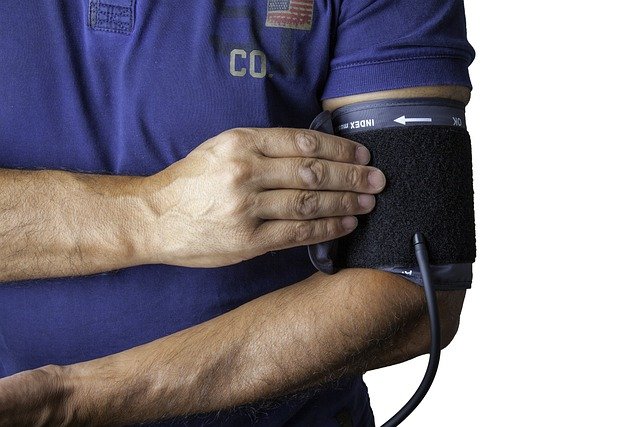Liver Cirrhosis – Warning Signs You Shouldn’t Ignore
Liver cirrhosis develops gradually and often goes unnoticed until serious complications appear. Fatigue, abdominal swelling, and unexplained weight changes can be early indicators, yet they are easily overlooked. Understanding these warning signs and recognizing them in time is essential for seeking proper medical care and protecting long-term liver health.

Early Warning Signs of Liver Cirrhosis
Detecting liver cirrhosis in its early stages can significantly improve outcomes and treatment options. Here are the early warning signs to watch for:
-
Fatigue and weakness that persists regardless of adequate rest
-
Unexplained weight loss or reduced appetite
-
Mild pain or discomfort in the upper right side of the abdomen
-
Spider-like blood vessels visible on the skin (spider angiomas)
-
Redness on the palms of hands (palmar erythema)
-
Easy bruising and bleeding tendencies
-
Itchy skin without apparent cause
-
Swelling in the ankles, legs, or feet (edema)
-
Increased sensitivity to medications and alcohol
-
Decreased sex drive or reproductive issues
These early symptoms are often subtle and might be attributed to other conditions, which is why liver cirrhosis frequently goes undetected in its initial stages.
Symptoms of Cirrhosis Not to Ignore
As liver cirrhosis progresses, more severe and concerning symptoms may develop that require immediate medical attention:
-
Yellowing of the skin and whites of the eyes (jaundice)
-
Abdominal swelling due to fluid accumulation (ascites)
-
Confusion, drowsiness, and slurred speech (hepatic encephalopathy)
-
Vomiting blood or material that looks like coffee grounds
-
Black, tarry stools indicating internal bleeding
-
Persistent fever with no apparent cause
-
Extreme fatigue that interferes with daily activities
-
Significant muscle wasting and severe weight loss
-
Personality changes or cognitive impairment
-
Enlarged veins in the esophagus or stomach that may bleed (varices)
-
Development of male breast tissue (gynecomastia)
These advanced symptoms indicate significant liver dysfunction and potential complications that require urgent medical evaluation and intervention.
Causes and Risks of Liver Cirrhosis
Understanding what causes cirrhosis can help identify those at higher risk and potentially prevent the condition from developing. The most common causes include:
Chronic alcohol abuse remains the leading cause of cirrhosis in many countries, including the United States. Long-term, excessive alcohol consumption damages liver cells and promotes inflammation and scarring. Viral hepatitis, particularly hepatitis B and C, can cause chronic liver inflammation that eventually leads to cirrhosis if left untreated. Non-alcoholic fatty liver disease (NAFLD) and its more severe form, non-alcoholic steatohepatitis (NASH), are becoming increasingly common causes of cirrhosis due to rising obesity rates.
Other risk factors include autoimmune hepatitis, certain inherited metabolic disorders like hemochromatosis and Wilson’s disease, prolonged exposure to toxins or certain medications, and biliary diseases that block the bile ducts. The risk increases with age, with most cases diagnosed in people over 50. Men who consume alcohol heavily are at greater risk than women, although women develop alcohol-related liver disease more quickly and with less alcohol consumption.
How Liver Cirrhosis Affects Health
The liver performs hundreds of essential functions, and cirrhosis impacts nearly every system in the body. As liver function deteriorates, patients may experience:
Impaired detoxification leading to the accumulation of toxins in the bloodstream, which can affect brain function and cause hepatic encephalopathy. Portal hypertension (increased pressure in the portal vein) can result in enlarged veins in the esophagus and stomach that may rupture and bleed. The liver’s reduced ability to produce proteins affects blood clotting, leading to easy bruising and bleeding.
Cirrhosis also impacts metabolism and nutrition, causing muscle wasting, weight loss, and malnutrition. Hormone imbalances can lead to gynecomastia in men and menstrual irregularities in women. The risk of liver cancer significantly increases in cirrhotic patients, with up to 5% developing liver cancer annually. Cirrhosis can also affect kidney function, potentially leading to a serious condition called hepatorenal syndrome.
Managing Cirrhosis Through Lifestyle Changes
While cirrhosis cannot be reversed, appropriate management can slow its progression and improve quality of life:
Complete abstinence from alcohol is essential for all cirrhosis patients, regardless of cause. Maintaining a healthy diet low in sodium helps control fluid retention and ascites. Regular medical monitoring is crucial—this includes screening for complications like varices and liver cancer. Following medication regimens precisely helps manage symptoms and prevent further damage. Patients should avoid over-the-counter medications that can stress the liver, particularly acetaminophen and certain NSAIDs.
Exercise, when approved by a healthcare provider, can help maintain muscle mass and overall health. Vaccination against hepatitis A and B, pneumonia, and influenza is recommended to prevent additional liver stress from infections. Managing other health conditions like diabetes and high blood pressure is also important, as these can worsen liver disease.
This article is for informational purposes only and should not be considered medical advice. Please consult a qualified healthcare professional for personalized guidance and treatment.




